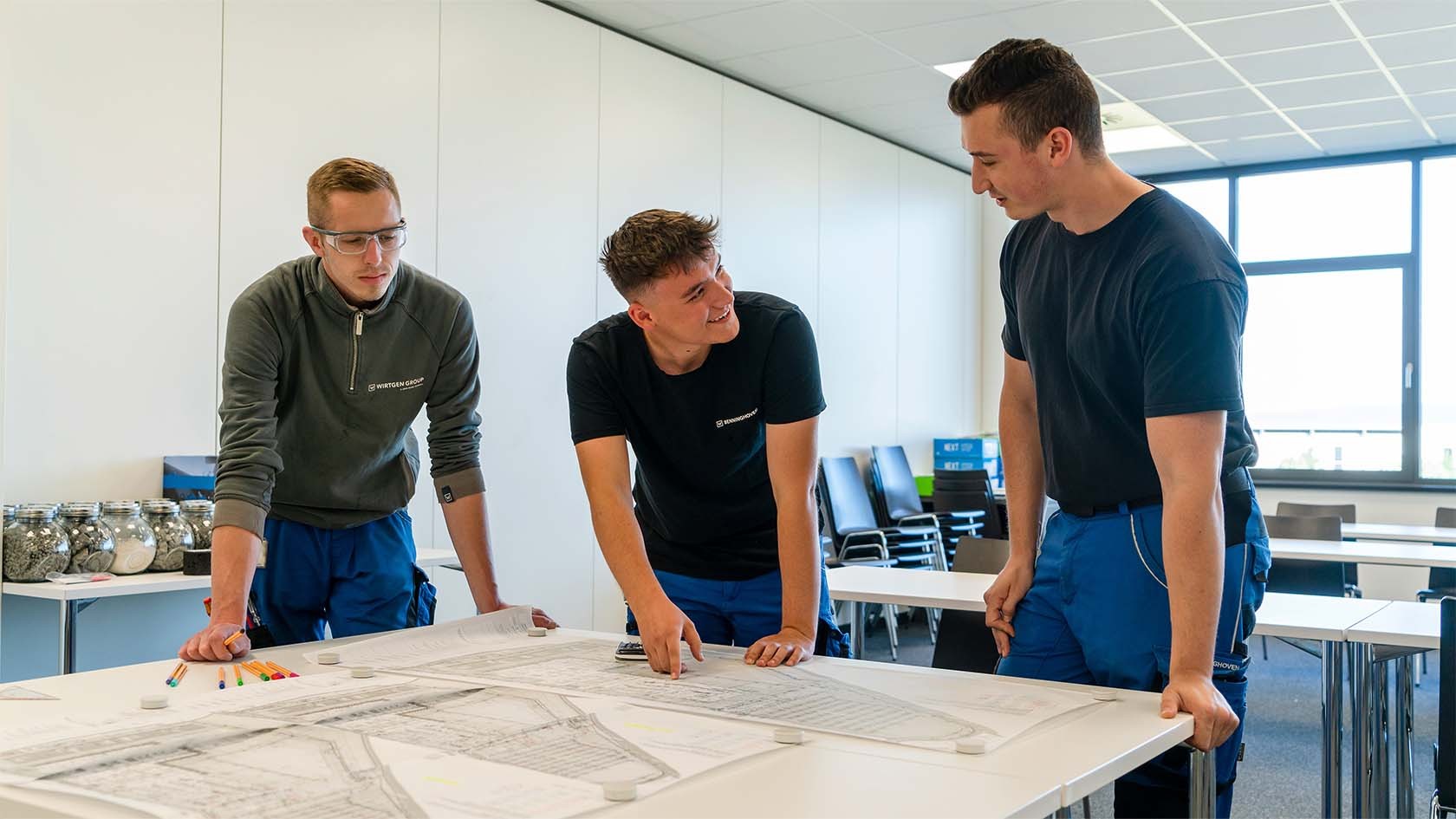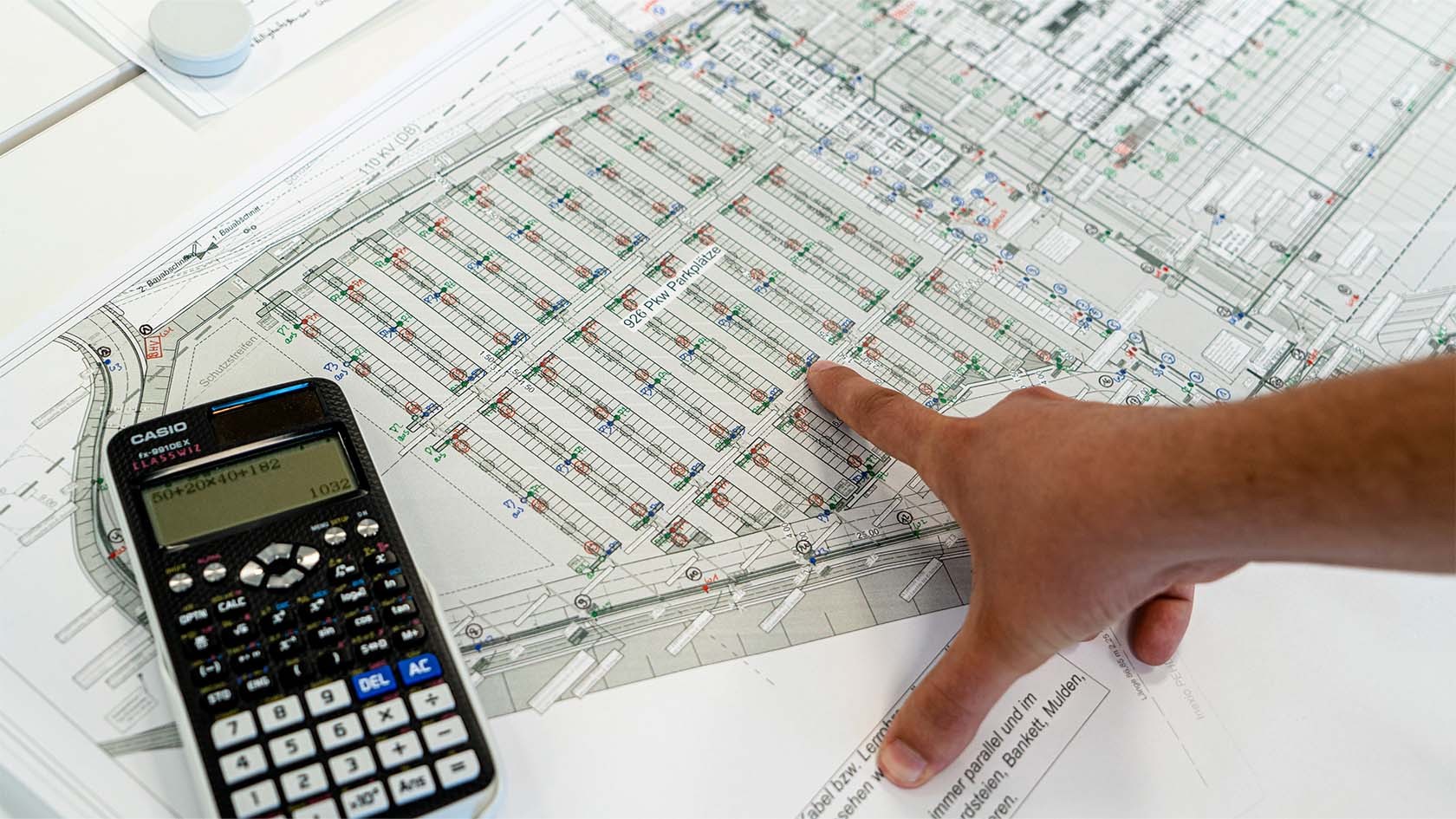- Full capacity
- at darkness
- Consumption
- 21,286.224 kWh/year
- Electricity costs
- €6,385.87/year
- CO₂ emissions*
- 7.791 tons/year


Optimization of the lighting system resulted in a 64% increase in efficiency
At Benninghoven too, the younger generation is deeply concerned about combating climate change and protecting the environment. How can companies reduce energy consumption and CO₂ emissions even further, and where can improvements be made in the use of company resources? Three Benninghoven trainees examined these questions as part of the IHK (Chamber of Industry and Commerce) project “Energy Scouts 2021” and developed and implemented a sustainable concept for optimizing the parking lot lighting. The intelligent control of the switching groups, tailored to shift and weekend times, saves energy, reduces costs and reinforces the Wirtgen Group's sustainability principles.
Saves CO₂: Stadium effect versus on-demand lighting
There were plenty of ideas – from heating water to supplying compressed air. In conjunction with Benninghoven Facility Management, Andreas Freis, Jannik Theis and Zachery Lake, all three in their third year of training as electronics technicians for industrial engineering, looked for a project that offered high potential for energy savings and was feasible within the scope of their training. The decision was made to “optimize the parking lot lighting” – a much-discussed topic among employees in the past. The aim was to replace the “stadium lighting effect” with targeted, circuit-controlled lighting that ensured the best possible utilization and was also energy-efficient.
Good arguments in favor of optimized parking lot lighting:
After taking part in a workshop, in which they were taught the basics about Energy Scouts & environmental protection by an energy consultant, Andreas Freis, Jannik Theis and Zachery Lake began the project in winter 2021, highly motivated.
What was the current situation? The first step was to take an inventory of all the existing lights in the parking lot and the current switching groups. There was no meaningful plan with respect to the switching groups, so the three trainees had to check the assignment of the lights to the circuits themselves and come up with a plan.

What about the brightness? The brightness of the individual lights was determined using a lux meter and then compared with the legal requirements relating to the plant street, footpath and parking area. It quickly became clear that it was possible to make energy savings without compromising on safety.
Based on this, the trainees carried out a payback calculation using Excel. With the aid of the data sheets, it was possible to determine the wattage for each individual luminaire and thus calculate the energy consumption before starting the project. Changing the switching times and switching groups to match the needs and different working times of the employees produced an optimized result: perfect illumination with due consideration of all regulations and safety aspects!
Lighting gets “smart”: the server was now programmed for “intelligent” control of the parking lot lighting. This was handled by facility manager Daniel Kaufmann, since the trainees do not have access to the control system for the building services.
Now it was time to get down to business: the first test runs took place on the rear section of the parking lot. To optimize the switching groups, a total of 69 luminaires had to be reconnected in just 2 days – in bitterly cold weather too. Fortunately, the three trainees received hands-on support from their colleagues in training, maintenance and facility management.
Was everything in compliance with the guidelines? Once again, the brightness of the luminaires was checked using the measuring apparatus and meticulously compared with the operational and legal requirements.
The final documentation and recalculation of energy consumption showed that the project was a complete success! With a 64% increase in efficiency, the investment would pay for itself in just under nine months. CO₂ emissions and electricity costs will be reduced by almost two-thirds. We are already looking into implementing this for the rest of the lighting.
Congratulations to Andreas Freis, Jannik Theis and Zachery Lake for this great example of sustainability in action. The commitment of the next generation will determine what our path to carbon neutrality will look like in the years to come. These three are definitely ahead of the game!
All three apprentices passed their training with top marks in the summer of 2022 and have been hired by the company.
*with a power source mix of renewable and fossil energy (reduction possible if switching to purely renewable energy)

